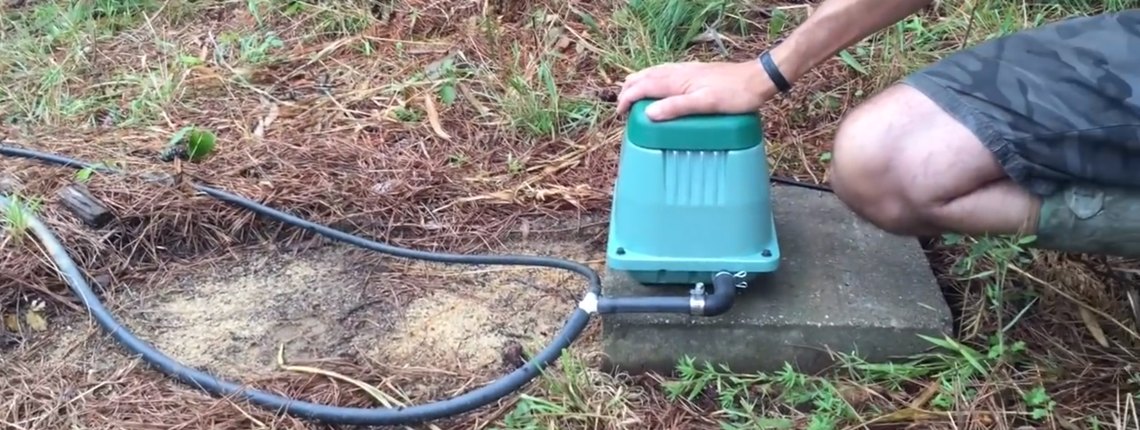February 24, 2020
How Water Depth, Pipe Size, and Diffuser Type Affect Pond Aeration and System Longevity
Creating a successful pond aeration package

Back pressure in the aeration system directly impacts the amount of oxygen that is dissolved in a pond. Simply put, the more back pressure, the less air that enters the water for proper mixing and oxygenation. Additionally, the higher the pressure, the less air that is circulating through the pump and cooling the motor, which ultimately impacts the life of the diaphragms in the pump.
Three major factors that impact pressure:
- Pond Depth – the deeper the pond, the more pressure is put on the air pump. As a rule of thumb, every 2.31 feet of depth adds 1 PSI of pressure.
- Friction Loss – The size of the pipe, the length of the pipe, and any elbows in the pipe can directly impact the amount of friction, thus the loss of air flow through the pipe.
- Diffuser Pore Size – The pore diameter impacts the amount of pressure that is put on the pump. The smaller the hole, the higher the pressure.
How to limit back pressure:
Selecting the correct pipe size will limit the amount of friction loss. HIBLOW recommends that a ½” diameter pipe is used up to 100 feet. For anything beyond 100 feet, a ¾” pipe is recommended. Pipe sized at 3/8” is common in the pond industry but can cause significant friction loss. To limit friction loss when setting up multiple diffusers, it is best to avoid 90-degree angle elbows and use 45-degree or even multiple 22-degree fittings if possible.
HIBLOW recommends that a diffuser is not dropped below 10 feet of water depth. To maximize aeration, 6-8 feet is preferred. The depth is important to understand when choosing the size of the air pump as the deeper the water, the less air flow. So, you most likely will need to go up a size or two in pump models as your pond’s dimensions get deeper and larger.
The most common diffusers in pond aeration are ceramic stone and membranes, which have small pores to produce fine air bubbles. Depending on the pore size, some standard ceramic and membrane diffusers can add as much as 1 PSI of back pressure. Ideally, you want a diffuser with a starting clean back pressure of .25 psi to maximize the amount of air the HIBLOW pump can produce. It is important to ask the diffuser manufacturer for this starting pressure information when selecting a model. Additionally, a diffuser can easily clog, therefore cleaning or replacing the diffuser on a regular basis is recommended. A clogged diffuser is the best way to limit the life of the air pump and reduce the amount of air making it into the water.
It’s easy to monitor the pressure in your aeration system by installing a tee in the air line connected to the outlet of the pump and inserting a pressure gauge. Keep tabs on this pressure reading every month and you’ll see the pressure creep up as the diffuser clogs. This can also alert you to a broken pipe or loose fitting if the pressure suddenly drops. Overall, a good troubleshooting tool.